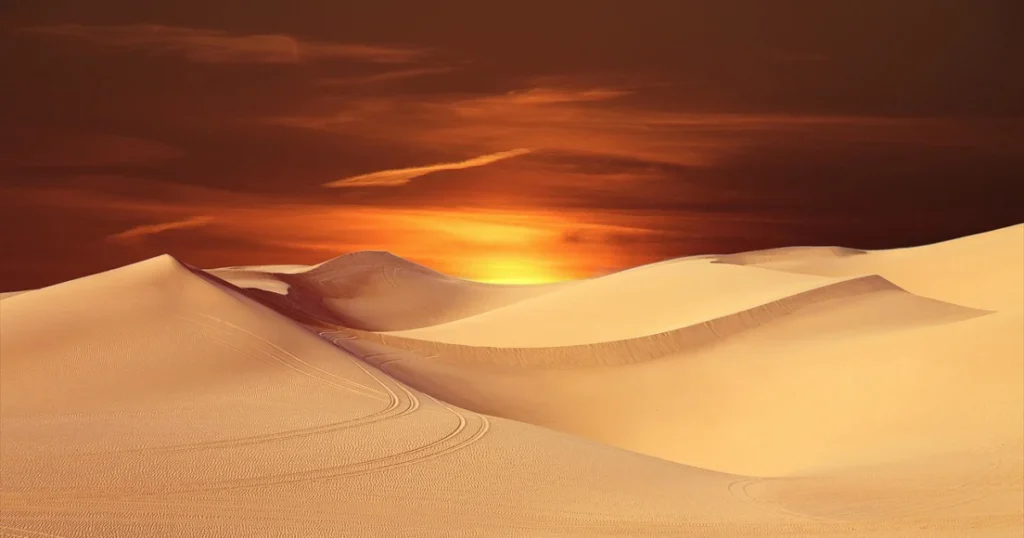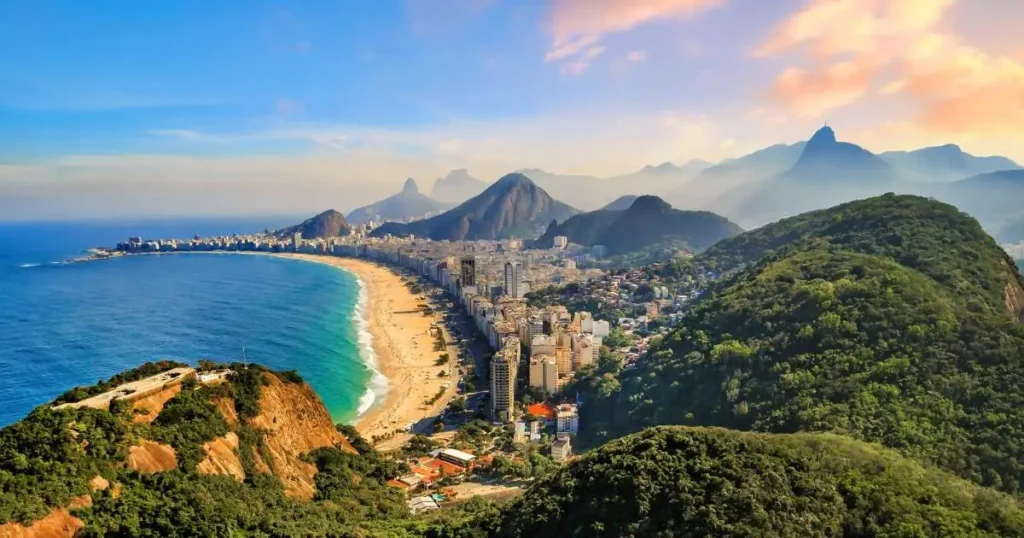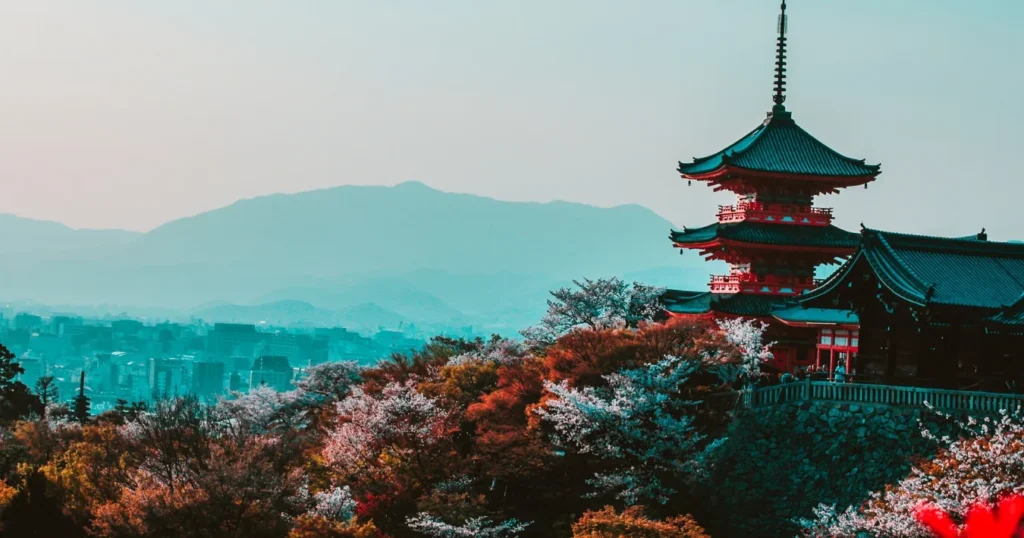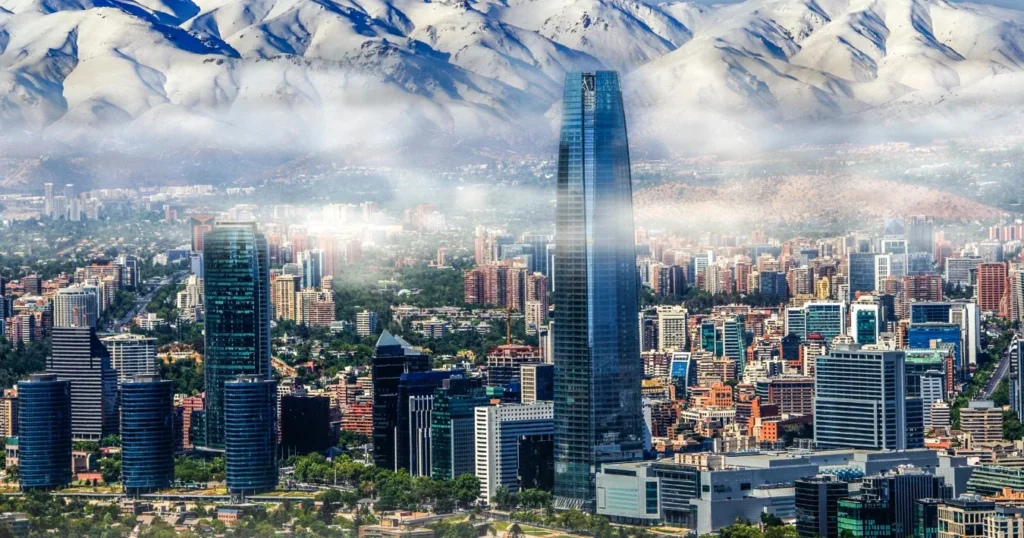Table of Contents
Unique desert destinations in South America captivate travelers with their breathtaking landscapes and cultural richness. From Chile’s high-altitude salt flats to Colombia’s red-sand Tatacoa Desert, these lesser-known wonders offer unforgettable adventures.
Whether you’re stargazing in the Atacama or exploring Bolivia’s surreal Salar de Uyuni, each desert unveils a tapestry of geological marvels and indigenous heritage that promise an extraordinary journey.
Key Takeaways
- South America’s deserts include the driest non-polar desert (Atacama) and the world’s largest salt flat (Salar de Uyuni).
- Must-see landscapes like Valle de la Luna and Tatacoa’s two-colored deserts offer visually stunning vistas.
- Off-the-beaten-path adventures include stargazing in certified dark-sky areas and sandboarding over dunes near Huacachina.
- These regions blend indigenous heritage, unique wildlife, and extreme environments into unforgettable journeys.
- Budget-friendly options exist for lodging, transport, and activities, making exploration accessible to all.
The Allure of South America’s Desert Landscapes
South America’s remote deserts are home to breathtaking landscapes. These areas mix stunning geology with surprising life, making them unique. You’ll find towering sand dunes and salt flats that look like another world.
Why South American Deserts Stand Out From the Rest
So, what makes these places special? Their remote spots and harsh conditions lead to rare life forms. Picture cacti growing in dry lands or flamingos in salt pans high up. Here’s why they’re unique:
- Geological wonders: Volcanic shapes, fossilized lava, and old rock layers.
- Climate extremes: Some spots get almost no rain, yet life finds a way.
- Cultural significance: Indigenous people have lived here for thousands of years.
The Diverse Ecosystems of South American Arid Regions
Life thrives in these harsh environments in surprising ways. The Tatacoa Desert, for example, has red and gray zones that support different life. Here’s a look at some of these diverse areas:
| Desert | Key Features | Unique Species |
|---|---|---|
| Atacama | High-altitude salt flats, sand dunes | Andean flamingos, desert lizards |
| Tatacoa | Contrasting red and gray rock formations | Cactus finches, scorpion species |
| Patagonian | Wind-sculpted rocks, arid plains | Puna flamingos, guanacos |
How These Landscapes Were Formed
These landscapes were shaped over millions of years. Tectonic movements and erosion played big roles. Mountains rose, creating dry areas. Glaciers melted, leaving salt flats behind.
Wind and water then shaped the dunes and canyons. They preserved ancient fossils in the rocks.
Atacama Desert, Chile: The Driest Non-Polar Desert on Earth
The Atacama Desert in northern Chile is a marvel. It has must-see landscapes that are unlike any other desert. You can explore valleys, geysers, and the night sky for an adventure you won’t forget.
Valle de la Luna and Its Otherworldly Terrain
Valle de la Luna looks like the moon. Its rock formations, shaped by wind and time, are breathtaking. You’ll see salt flats, sand dunes, and jagged peaks. Don’t miss the “Three Marys” peaks or the “Cathedral” rock. Tip: Visit at sunset for amazing shadows.
El Tatio Geysers at Dawn
Wake up early to see El Tatio’s geysers. Over 80 geysers shoot steam and water high into the air. The largest can reach 15 meters. It’s cold, so wear warm clothes.
Stargazing in One of the World’s Clearest Skies
The Atacama has some of the clearest skies on Earth. It’s perfect for stargazing. The must-see landscapes include the Milky Way and planets. Visit the European Southern Observatory’s Very Large Telescope for a tour.
| Landmark | Highlight | Visitor Tip |
|---|---|---|
| Valle de la Luna | Otherworldly rock formations | Visit at sunset for vivid colors |
| El Tatio Geysers | Active geysers erupting at dawn | Layer up against cold morning air |
| Stargazing Sites | Pristine night skies | Book guided tours for celestial insights |
The Mesmerizing Salt Flats in Bolivia
The salt flats in Bolivia cover 4,000 square miles, making them a surreal must-see landscape. Salar de Uyuni is more than a place; it’s a natural wonder that changes with the seasons. In the dry season, it looks like a mosaic of salt polygons. When it rains, the surface turns into a mirror, reflecting the sky.
Guided tours reveal its secrets. Visitors often see Laguna Colorada, a lagoon filled with flamingos, or Isla del Pescado, a volcanic island. Photographers love it here, but the best time to visit depends on what you want to see:
- May–October: Explore dry salt formations and crystal-clear skies.
- November–April: Witness the mirror effect and vibrant reflections.
| Lagoon | Color | Highlights |
|---|---|---|
| Laguna Colorada | Red | Volcanic minerals and Andean flamingos. |
| Laguna Blanca | Grayish-white | Alkali flats and birdwatching spots. |
| Laguna Verde | Pale green | Views of Licancabur volcano and turquoise waters. |
These unique desert destinations in South America have surprises all year. Local guides share stories of the salt’s importance in indigenous culture. From hiking on salt terraces to trying coca tea with Quechua communities, every experience adds to the wonder of this place.
Tatacoa Desert, Colombia: A Red Desert Paradise
Colombia’s Tatacoa Desert is a unique getaway. This tatacoa desert colombia covers 300 square kilometers. It features rust-colored dunes and rock formations that look like the moon. It’s perfect for off-the-beaten-path adventures and is far from South America’s busy cities.
The Striking Red and Gray Zones
The desert has two areas: the red zone with iron-rich soil and the gray zone with jagged limestone. Trails like Sendero del Silencio let you see both. Every step shows nature’s creativity.
Astronomical Observatory Experiences
At night, Tatacoa becomes a place to see the stars. Its remote spot is great for stargazing. At places like Parque Astronómico La Batea, you can see the Milky Way up close.
Unique Flora and Fauna of Tatacoa
- Candelabro cacti with sprawling arms
- Desert foxes and burrowing owls surviving in harsh conditions
- Over 200 bird species, including the Andean condor soaring overhead
Getting to Tatacoa starts in Neiva, a 45-minute drive away. You can stay at budget-friendly places like Cabañas El Paraíso. Guided tours offer insights into the desert’s geology and wildlife. Exploring here means finding a desert full of stories of survival and beauty.
Exploring Unique Desert Destinations in South America on a Budget
Exploring the unique desert destinations in South America doesn’t have to break the bank. With some planning, you can see amazing sights without spending too much. Here are some tips to stretch your budget:
Affordable Accommodation Options
Looking for cheap places to stay? Here are some options:
- Camping in the Atacama Desert starts at $15–$30 per night, including basic amenities.
- Hostels in desert towns like Uyuni offer dorm beds from $8–$12, perfect for solo travelers.
- Guesthouses in Tatacoa Desert provide private rooms for $20–$35, often with cooking facilities.
Transportation Tips That Save Money
Traveling smart can save you money:
- Ride public buses between destinations—journeys from Copiapó to San Pedro de Atacama cost under $20 round-trip.
- Book group tours to Salar de Uyuni for $40–$60 per person, splitting costs with others.
- Rent bikes in smaller towns like Villa Marista for $8–$10 daily to explore nearby trails.
Free and Low-Cost Attractions
Many desert highlights are budget-friendly or free:
- Watch sunsets over the Colchane Valley in the Atacama—no entry fee required.
- Stargaze at the Elqui Valley’s observatories for $5–$10 per session, or free with your own telescope.
- Walk the trails in the Sechura Desert—guided walks start at $12, or hike solo for free.
By following these tips, you can explore deserts like the Pampa del Tamarugal or the Gran Chaco on a budget. Always compare prices in local markets and book in advance to get the best deals.
Patagonian Desert: Argentina’s Wild Frontier
The Patagonian Desert stretches across Argentina’s southern parts. It’s a remote south american desert with vast steppes and rugged plateaus. Unlike the Andean peaks, this desert offers off-the-beaten-path adventures for those who love solitude. It’s home to the world’s largest continental steppe, with windswept valleys and ancient rock formations.
- Peninsula Valdés: Spot elephant seals and right whales along its coasts.
- Petrified Forests near Sarmiento: Walk among fossilized trees up to 150 million years old.
- Ischigualasto Provincial Park: Explore the “Valley of the Moon,” a UNESCO site with Mars-like terrain.
Patagonia also has unique desert destinations in south america that tell its human story. Stay in estancias (ranchos) to learn about gauchos who herded cattle here for generations. Their traditions, like horsemanship and asado cooking, offer a glimpse into this harsh yet resilient ecosystem.
| Base Town | Highlights | Best Time to Visit |
|---|---|---|
| Perito Moreno | Steppe treks, guanaco spotting | October–April (mild temps) |
| El Chaltén | Camping near Cerro Torre | November–March (clear skies) |
| Comodoro Rivadavia | Wildlife tours, coastal hikes | December–February (warmest) |
Whether camping under starry skies or tracing ancient fossils, this desert invites travelers to embrace its untamed spirit. Respect its fragile ecology by sticking to marked trails and supporting eco-certified tours. The Patagonian Desert isn’t just a destination—it’s a journey into the raw, enduring heart of Argentina’s wild frontier.
Huacachina: Peru’s Desert Oasis
In the heart of Peru’s coastal desert, hidden oasis south america Huacachina is a unique escape. This natural lagoon is surrounded by tall sand dunes. It’s perfect for those looking for off-the-beaten-path adventures.
Here, you can slide down dunes or enjoy pisco sours under the stars. Huacachina mixes excitement with peace.
Sandboarding and Dune Buggy Adventures
Experience the thrill of sandboarding on dunes over 300 feet tall.
- Guided tours offer boards and safety gear for newbies.
- Dune buggy tours speed across golden dunes, ending at sunset spots.
Many local operators offer packages that include both fun and transport from Ica.
The Legend Behind the Oasis
Legend says a princess’s mirror broke, creating the lagoon. This story adds to the oasis’s mystique. Locals share these tales over meals by the lake, making your visit even more special.
Nearby Attractions Worth Visiting
Don’t miss these spots when you’re in Huacachina:
- Nazca Lines: See ancient geoglyphs from the sky in a small plane from Nazca.
- Ica’s vineyards: Explore wineries that make top-notch wines.
- Ballestas Islands: Take a boat trip from Paracas to see sea lions and seabirds.
Booking tours locally is easy, so you can explore more of hidden oasis south america.
Best Time to Visit South America’s Desert Regions
Planning your trip to South America’s deserts is key. You want to see the unique desert spots at their best. The right time means good weather, fewer crowds, and special sights.
Seasonal Variations and Climate Patterns
Every desert has its best time to explore:
- Atacama Desert (Chile): May–November is dry and sunny. Skip January–March for rare rains.
- Tatacoa (Colombia): March–May has nice weather. December–February gets very hot.
- Uyuni Salt Flats (Bolivia): May–November is dry. November–March rains but sees flamingos.
Crowd Levels Throughout the Year
Busy times attract more people, quiet months offer peace:
- June–August and December–February are busy but sunny.
- April–May and September–October are less crowded but still nice.
Special Events and Natural Phenomena Timing
Plan to see these amazing sights:
- Flamingo Migration: November–March in Bolivia’s salt flats.
- Desierto Florido: July–September in Atacama after rare rains.
- Cultural Festivals: December and August in desert towns.
Use this guide to find the best time for your desert adventure. Check local events and weather for a great trip.
Essential Desert Photography Tips for Breathtaking Shots
Photographing South America’s deserts needs preparation and skill. First, protect your gear from sand and extreme heat. Use airtight cases and lens caps when not in use. Golden hour, the hour after sunrise or before sunset, is perfect for wide-angle shots of dunes or salt flats.
- Carry a wide-angle lens (24mm or wider) to capture expansive vistas.
- Use a polarizing filter to reduce glare on sand or water surfaces.
- Invest in a sturdy tripod for long exposures of starry skies or flowing sands.
| Scenario | Best Time | Settings |
|---|---|---|
| Sunrise/Sunset | 1 hour around dawn/dusk | Lower ISO (100-400), slower shutter speeds (1/30s or slower) |
| Midday | Use shade or overcast days | Spot metering, higher shutter speeds to avoid overexposure |
| Night | Clear moonless nights | Wide aperture (f/2.8-f/4), 30-second exposures |
Smartphone users can frame shots with apps like Lightroom Mobile for editing contrast. For must-see landscapes like the Atacama’s salt flats or Tatacoa’s rock formations, try leading lines and symmetry. Always check the weather forecast and adjust your gear for desert temperature changes. With these tips, you’ll capture the raw beauty of these arid wonders.
Immersive Desert Culture Experiences You Shouldn’t Miss
South America’s deserts are more than just landscapes. They are living museums of ancient traditions. To truly understand their stories, seek out desert culture experiences that are centuries old. Engaging with local guides south america lets you learn about customs responsibly and support communities.
Indigenous Communities and Their Desert Heritage
In Chile’s Atacama, meet the Atacameño people who blend ancient practices into everyday life. In Bolivia’s Uyuni, Aymara elders share myths about salt flats and mountain spirits. Colombia’s Wayuu tribes show off their woven textiles and oral histories in La Guajira’s dunes.
These interactions show how harsh climates shaped survival wisdom and spiritual beliefs.
Traditional Cuisine of Desert Regions
- Try quinoa-based dishes in the Andean highlands, where ancient farming techniques thrive.
- Savor cactus paddles cooked with local spices in Argentina’s Patagonian oases.
- Sample alpaca jerky and charki, staples of arid livelihoods.
Cultural Festivals and Celebrations
Attend the Inti Raymi summer solstice festival in the Peruvian Andes, where dancers honor the sun god. Bolivia’s Oruro carnival blends indigenous and Catholic rituals, while Chile’s Fiesta de la Tirana mixes folk music with desert folklore. These events let you witness traditions passed down through generations.
Respect is key: ask permission before photographing rituals and follow community rules. Choose tours led by certified local guides south america to ensure fair practices. By participating in these desert culture experiences, you preserve heritage while gaining insights no guidebook can offer.
Wildlife Spotting in South America’s Arid Environments
Exploring remote south american deserts shows life thriving in tough conditions. You can see flamingos in salt flats and foxes in Patagonia. These places are home to animals like vicuñas and viscachas, which are rare to see up close.
- Guanacos: Agile relatives of llamas, often seen in herds across the Patagonian steppe.
- Andean Flamingos: Bright pink flocks gather in Atacama’s salt flats during wet seasons.
- Chaco Foxes: Nocturnal hunters with thick fur to withstand extreme temperatures.
| Species | Habitat | Best Viewing Time |
|---|---|---|
| Three-Wattled Bellbird | Arboreal niches in Tatacoa’s dry forests | Early morning calls |
| South American Gray Fox | Rocky outcrops of the Atacama | Dusk/dawn when active |
| Patagonian Mara | Grassy plains near Iberá Wetlands | Midday sunbathing |
For desert wildlife spotting, go out at dawn or dusk. Use binoculars quietly and don’t flash photos. Protect areas like Llullaillaco National Park where vicuñas live. Local guides can show you the best places to see animals.
These dry areas are full of life. By taking eco-friendly tours, you help protect animals like the Andean cat. Always stay on paths to keep the desert safe and enjoy seeing its amazing creatures.
Working with Local Guides: Why It Makes All the Difference
Local guides in South America make desert trips unforgettable. They know the best spots and keep you safe. Whether you’re on a budget desert travel or a luxury trip, their knowledge enriches your journey.
How to Find Reputable Guides
Begin by asking hotels or visitor centers for guide recommendations. Check their reviews and certifications, like the Chilean Tourism Board’s guide registry. Guides affiliated with eco-tourism groups are a good sign. Many budget travel agencies work with certified guides to offer quality at a low cost.
What to Expect from a Guided Experience
“A good guide isn’t just a driver—they’re a storyteller,” says Maria, a Bolivian guide with 15 years of experience.
Guided tours offer:
- Access to secret trails
- Stories of indigenous cultures and nature
- Safe travel with emergency gear and weather checks
Questions to Ask Before Booking
Before booking, ask:
- What training or certifications do you hold?
- Are group sizes limited for personalized attention?
- Do you prioritize sustainable practices?
- What’s included in the cost? (meals, transport, gear)
Budget desert travel often includes guides in multi-day tours. Private guides might cost $30–$60 USD per hour. Choose guides who respect the desert and share local stories.
Sustainable Tourism Practices for Desert Exploration
Exploring unique desert destinations in South America means making choices that protect these areas. Places like Chile’s Atacama or Colombia’s Tatacoa face dangers from too many visitors and environmental harm. Every traveler has a part to play in keeping these places beautiful for others to see.
“A single misplaced footprint can linger for decades in deserts. Travel lightly, leave no trace.”
- Carry reusable water bottles to cut plastic waste.
- Stick to marked trails to prevent erosion and habitat disruption.
- Dispose of trash, including human waste, properly in designated areas.
| Practice | Why It Matters | How to Do It |
|---|---|---|
| Use eco-certified tours | Supports conservation efforts | Choose guides certified by local environmental boards |
| Limit night lighting | Protects nocturnal wildlife | Follow dark-sky guidelines during stargazing |
| Respect cultural sites | Preserves heritage | Avoid touching rock art or ancient structures |
When you book tours, look for places like Sustainable Desert Journeys in Bolivia. They help plant trees. Stay at places like Chile’s Campamento La Anita, which use solar power. Buying crafts from local artists helps the economy too.
By following these steps, you make your trip better for the environment. Choosing sustainable desert tourism helps keep these amazing places alive. It’s not just a choice—it’s essential for their survival.
Conclusion: Embracing the Majestic Beauty of South America’s Desert Landscapes
South America’s deserts are full of hidden wonders. Places like Bolivia’s salt flats and Chile’s Atacama offer both adventure and peace. Each spot, from Colombia’s red sands to Argentina’s Patagonia, tells a story of nature’s strength.
Traveling here is safe and affordable. Local guides help you explore without worry. They make sure you see the dunes, geysers, and culture without stress.
These deserts are constantly changing, yet their beauty is timeless. Visiting now is perfect. Combining a desert trip with places like Machu Picchu or the Amazon makes for a great journey. These vast areas offer quiet and wonder, unlike anywhere else.
Looking for stargazing, culture, or untouched beauty? These landscapes have it all. South America’s deserts are waiting for those who want to see their true beauty. They are destinations that must be seen before they change.
FAQ
What are some unique desert destinations in South America?
South America has amazing deserts like the Atacama in Chile. It’s known for its alien-like landscapes. The Salar de Uyuni in Bolivia is the biggest salt flat in the world. And the Tatacoa Desert in Colombia is famous for its red and gray terrains. Each place offers a unique experience and view.
What is the best time to visit the deserts in South America?
The best time to see South America’s deserts changes. For the Atacama, visit from May to October for dry weather. Salar de Uyuni is best in the rainy season (December to March) for its mirror effect. Shoulder seasons (spring and fall) have nice weather and fewer people.
How can I photograph the stunning landscapes of South American deserts?
For amazing desert photos, shoot during the golden hour for soft light. Use wide-angle lenses for big views and a tripod for steady shots. Editing can make colors pop while keeping it real. Don’t forget to protect your camera from sand and try different angles to show off unique formations.
Are there budget-friendly options for experiencing deserts in South America?
Yes, you can travel to South America’s deserts on a budget. Look for cheap places to stay like hostels. Use local transport instead of tours to save money. Many beautiful spots are free, and you can pick guided tours based on your budget.
What wildlife can I spot in South America’s deserts?
South America’s deserts are home to surprising wildlife. You can see guanacos, vicuñas, and birds like flamingos. Desert foxes and reptiles also live here. The best time to see wildlife is at dawn and dusk when they’re most active.
How can I engage with desert cultures respectfully?
To respect local cultures, use local guides. They can share insights into communities like the Atacameños in Chile or the Aymara in Bolivia. Join community-based tours and always ask for permission before taking photos of people or cultural sites.
What are some sustainable practices for desert tourism?
To be a sustainable tourist, conserve water and dispose of waste correctly. Stay on paths to protect the environment. Support tours that care about the environment and local communities. Being responsible helps keep these beautiful places for others to enjoy.
Can you recommend hidden oases in South America?
Yes, there are hidden oases like Huacachina in Peru. It’s surrounded by sand dunes. The Tatacoa Desert also has natural springs. These oases offer a chance to relax in harsh desert environments and see local plants and animals.




